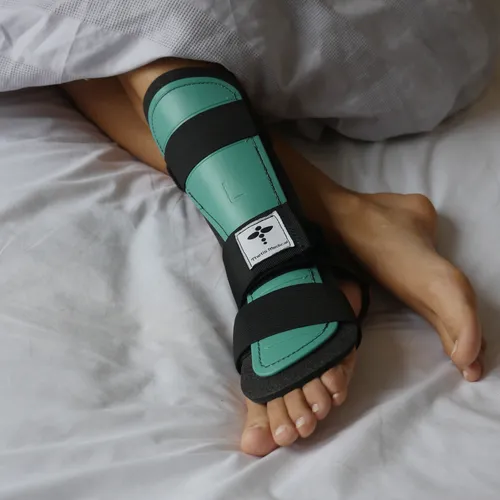Torn Achilles Treatment Pathway: Surgery vs Non-Surgical Options & Pain FAQs
Get the full eBook on Achilles tendon ruptures FREE.
Find your answer:
How to treat a torn Achilles tendon – surgery vs non-surgical?
How long can you wait for Achilles tendon surgery?
How long does Achilles tendon surgery take?
Recovery from Achilles Rupture Surgery
Pain after Achilles tendon rupture / surgery
Scar healing post-surgery
How to treat a torn Achilles tendon – surgery vs non-surgical?
Tendons, like bones, heal well in the right conditions. For the Achilles tendon it is thought that healing is best when the two torn ends are close together. Usually this is achieved by putting the foot into a tip toe position and keeping it there with a plaster cast or boot. If the ends of the tendon do not come together well, leaving a "gap" (this can be determined using an ultrasound scan) then surgery may be an option. The operation is to bring the ends together. It does not make the tendon strong. The same long recovery is required whether or not surgery is used. For real-world recovery examples, read our Torn Achilles recovery guide.
How long can you wait for Achilles tendon surgery?
Most surgeons prefer to repair the tendon (when surgery is required) within three weeks of the injury. This is because after that the "elastic" tendon ends have pulled apart and are harder to join.
How long does Achilles tendon surgery take?
Surgery to repair the Achilles tendon is usually performed as a Day Surgery procedure. The operation takes less than one hour. The recovery and rehabilitation will take many months.
Recovery from Achilles Rupture Surgery
It takes 2 weeks for the skin stitches to heal and you will probably be in a plaster cast till then. Once you are supported in a suitable boot, with the foot held in a tip-toe posture, then you can (and should) walk. Crutches may still be useful, to help with balance. After a few weeks (4-6) the boot is adjusted little by little to allow the heel to come down. From ten weeks (approximately) the boot is no longer needed. Now the long process of building up the muscle and rehabilitating begins. This phase lasts for about 6 months.
Pain after Achilles tendon rupture / surgery
The initial "snap" is painful, but this usually subsides quickly. The injury is then surprisingly painless. Similarly, if surgical repair is needed there is not much need for pain medication once the soreness from the skin cut settles.
- Heel Pain - Once you are walking in the boot then the underneath of the heel can become sore. Adding a gel heel cushion from the chemist store may help. This type of pain tends to resolve once you begin rehabilitation without the boot.
- Calf Pain – This should not be ignored, particularly if there is swelling affecting the whole lower leg. This combination of problems might mean there is a blocked vein (thrombosis), which can still occur even if you are taking blood thinners to prevent such problems. Seek medical advice if you are worried about this.
- Calf Spasm – A more common type of calf pain is cramping from the muscle which "has nothing to pull on" due to the tendon rupture. This type of pain will not have associated swelling and is intermittent.
- Knee Pain – This can occur due to the awkwardness of the high heeled boot and might affect either knee.
- Nerve Pain – Nerve damage is possible with surgical repair but tends to leave numbness rather than pain. Awkward walking from the boot (or crutches) can rarely give rise to back trouble and sciatica-like pain.
Scar healing post-surgery
The skin scar from an Achilles tendon repair usually heals very well, becoming almost invisible with time. During the early weeks after surgery there is a risk of skin infection, so resting properly to begin with is important (to keep the swelling down and stop the wound stretching). Once the plaster is removed and the sutures have gone you may wish to use creams or ointments rich in Vitamin E. Special scar reducing adhesive dressings may be of benefit, especially if you are prone to broad or "keloid" scar formation.

Torn Achilles? Sleep Soundly with the Splint.
The Splint is designed for comfort and to protect your healing Achilles.
Buy Now